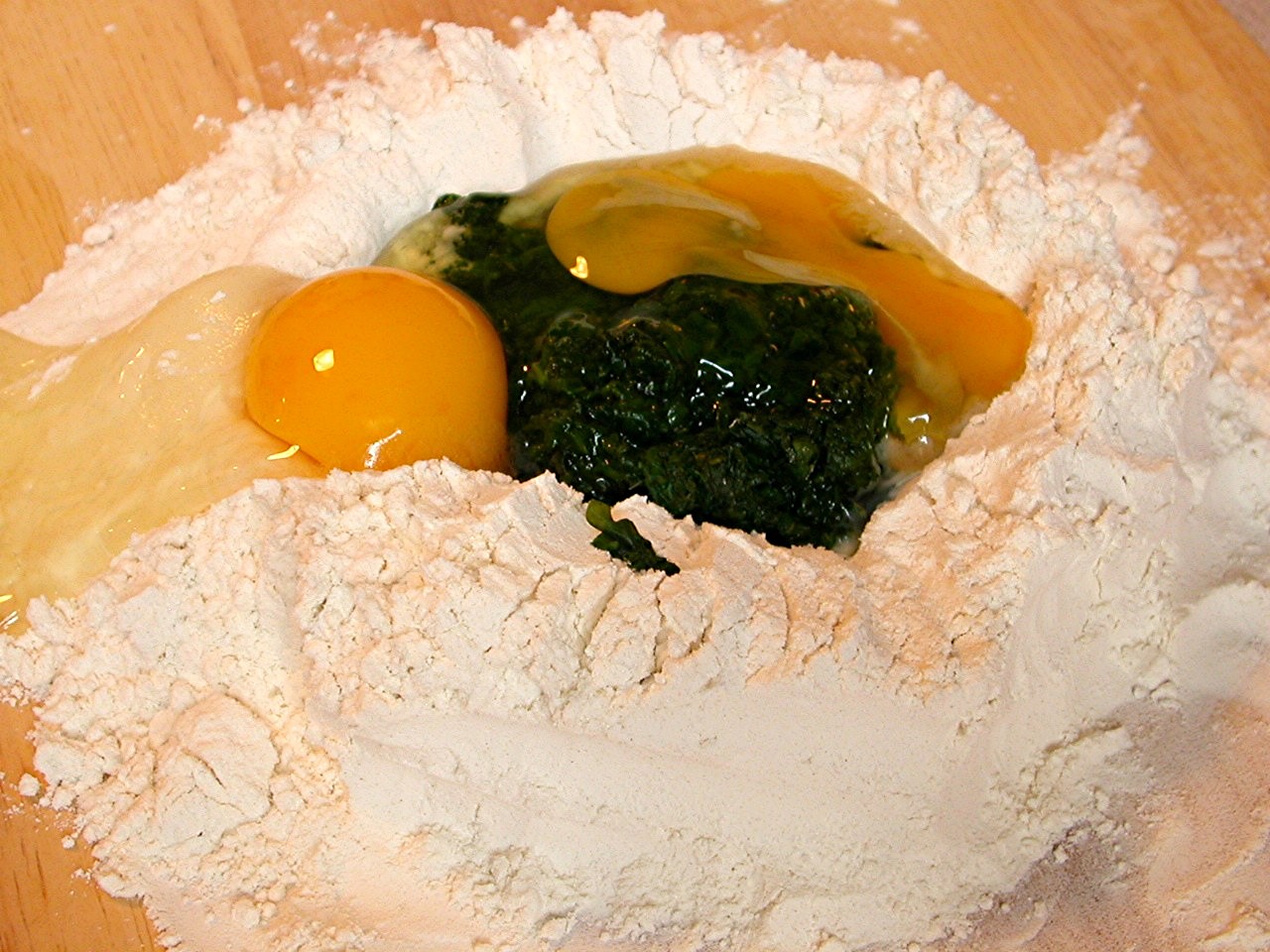I actually made this dish a couple of months ago, but never got around to putting it in my blog. There’s not much to say about it, other than that spaghetti and meatballs are delicious. What’s not to love about pasta, sauce, and dressed-up meat?
Of course, not all spaghetti and meatballs are created equal. But I’ve had my share of meatballs, and I’ve never had any better than these. This dish is a classic that will always please.
Classic Spaghetti and Meatballs (from Cooks Illustrated January 1998)
Serves 4 to 6
CI note: This streamlined recipe can be on the table in under an hour.
Bridget note: I find that recipes almost always call for more pasta per sauce than I prefer. Therefore, I would serve this with 12 ounces pasta instead of the 1 pound that the recipe calls for.
Meatballs
2 slices white sandwich bread (crusts discarded), torn into small cubes
½ cup buttermilk or 6 tablespoons plain yogurt thinned with 2 tablespoons sweet milk
¾ pound ground beef chuck (or 1 pound if omitting ground pork below)
¼ pound ground pork (to be mixed with ground chuck)
¼ cup grated Parmesan cheese
2 tablespoons minced fresh parsley leaves
1 large egg yolk
1 small clove garlic, minced (1 teaspoon)
¾ teaspoon table salt
Ground black pepper
vegetable oil for pan-frying (about 1¼ cups)
Simple Tomato Sauce
2 tablespoons extra-virgin olive oil
1 teaspoon minced garlic
1 can (28 ounces) crushed tomatoes
1 tablespoon minced fresh basil leaves
Table salt and ground black pepper
1 pound spaghetti
grated Parmesan cheese
1. For the meatballs: Combine bread and buttermilk in small bowl, mashing occasionally with fork, until smooth paste forms, about 10 minutes.
2. Mix all meatball ingredients, including bread mixture and pepper to taste in medium bowl. Lightly form 3 tablespoons of mixture into 1½-inch round meatballs; repeat with remaining mixture to form approximately 14 meatballs. (Compacting them can make the meatballs dense and hard. Can be placed on large plate, covered loosely with plastic wrap, and refrigerated for several hours.)
3. Bring 4 quarts of water to boil in large pot for cooking pasta.
4. Meanwhile, heat ¼-inch vegetable oil over medium-high heat in 10- or 11-inch sauté pan. When edge of meatball dipped in oil sizzles, add meatballs in single layer. Fry, turning several times, until nicely browned on all sides, about 10 minutes, regulating heat as needed to keep oil sizzling but not smoking. Transfer browned meatballs to paper towel–lined plate; set aside. Repeat, if necessary, with remaining meatballs.
5. For the sauce, discard oil in pan, leaving behind any browned bits. Add olive oil along with garlic; sauté, scraping up any browned bits, just until garlic is golden, about 30 seconds. Add tomatoes, bring to boil, and simmer gently until sauce thickens, about 10 minutes. Stir in basil; add salt and pepper to taste. Add meatballs and simmer, turning them occasionally, until heated through, about 5 minutes. Keep warm over low flame.
6. Meanwhile, add 1 tablespoon salt and pasta to boiling water. Cook until al dente, drain, and return to pot. Ladle several large spoonfuls of tomato sauce (without meatballs) over spaghetti and toss until noodles are well coated. Divide pasta among individual bowls and top each with a little more tomato sauce and 2 to 3 meatballs. Serve immediately with grated cheese passed separately.





















